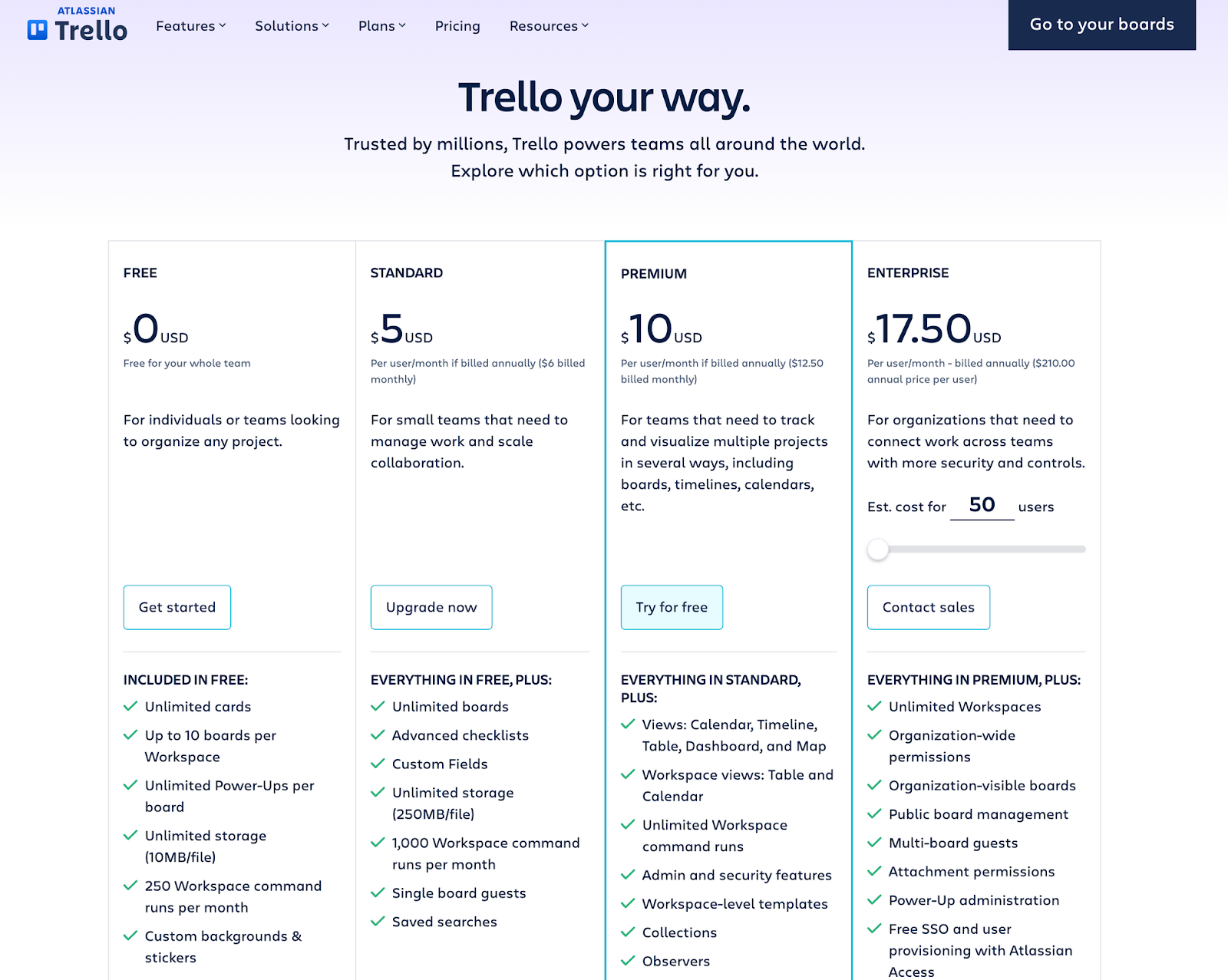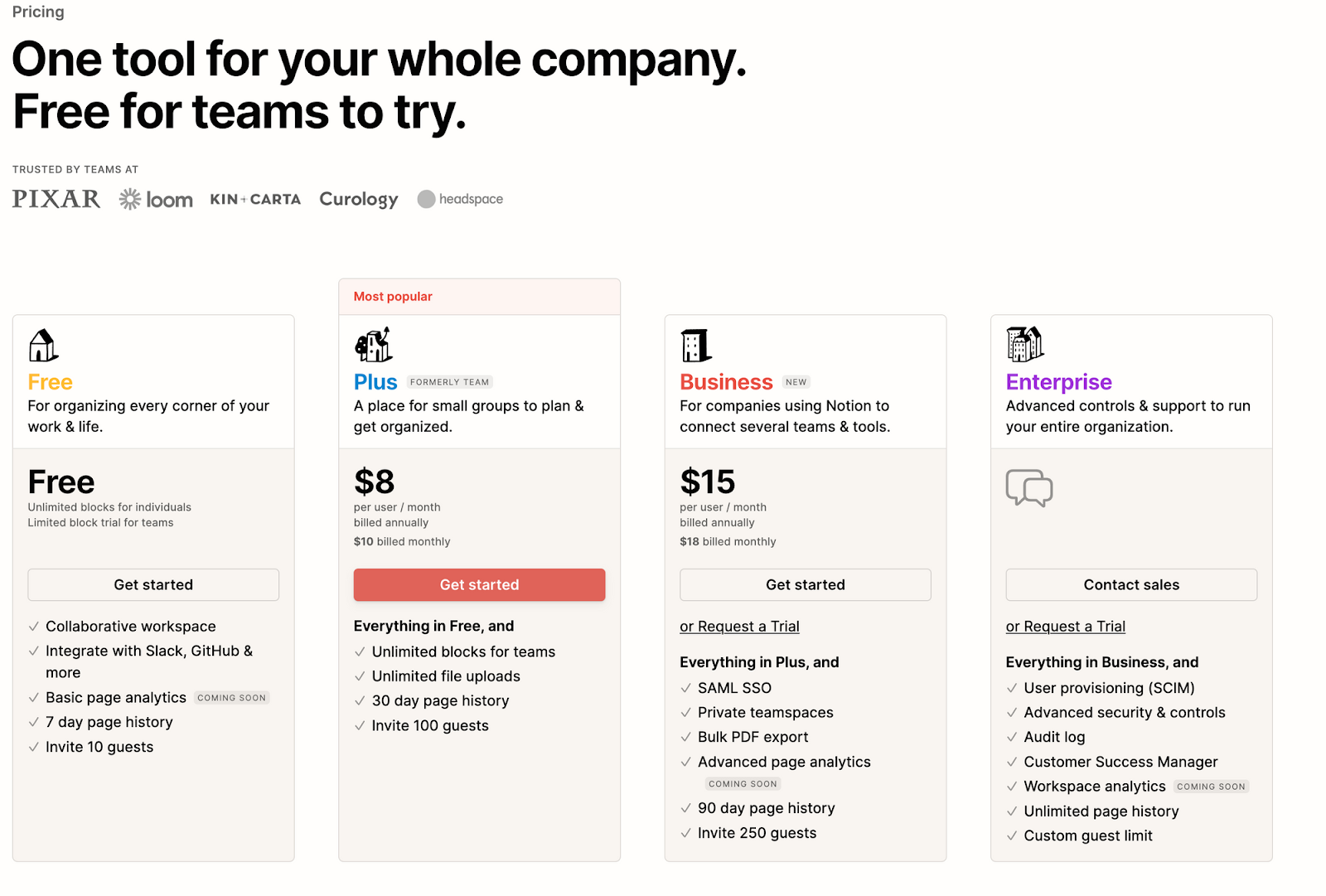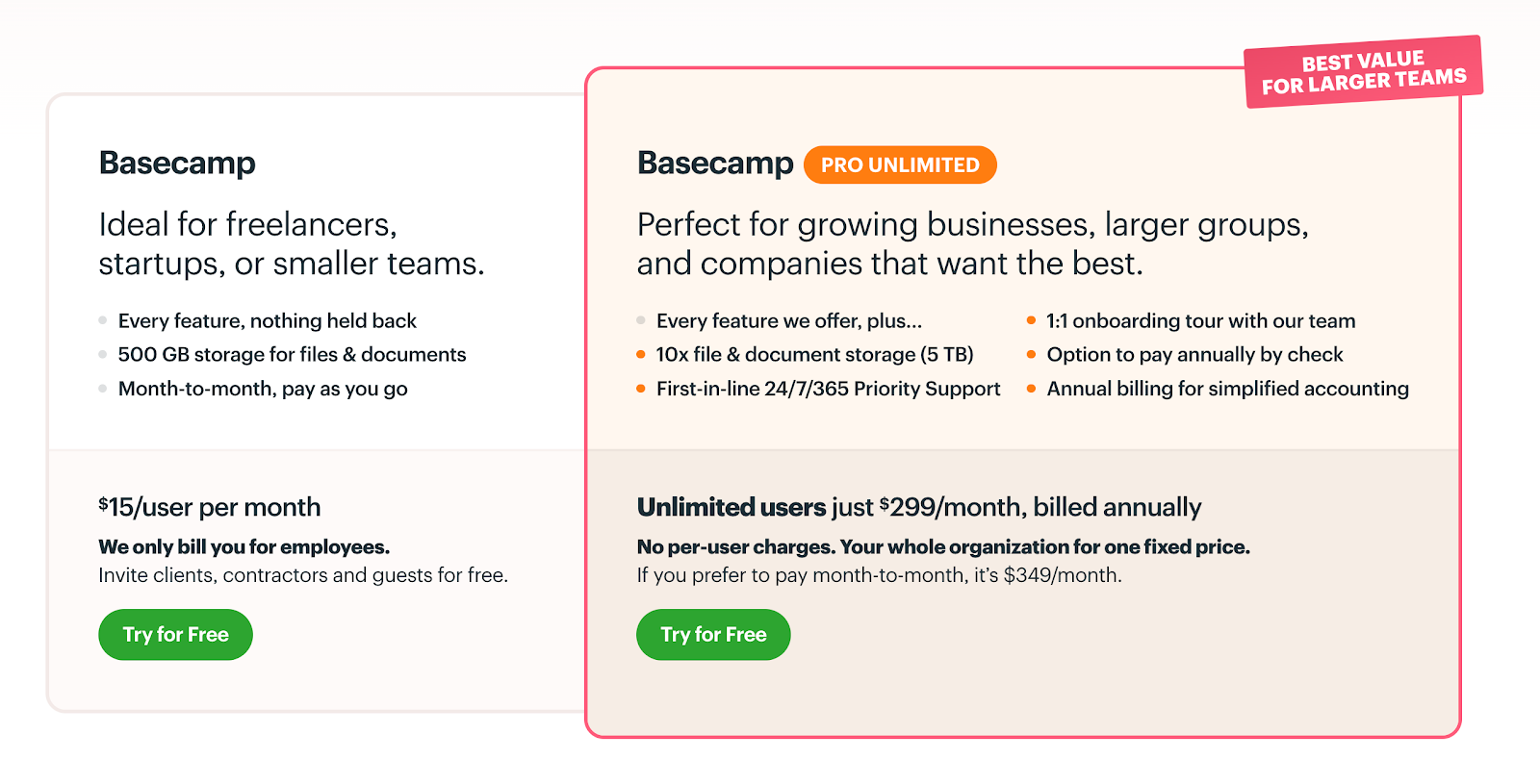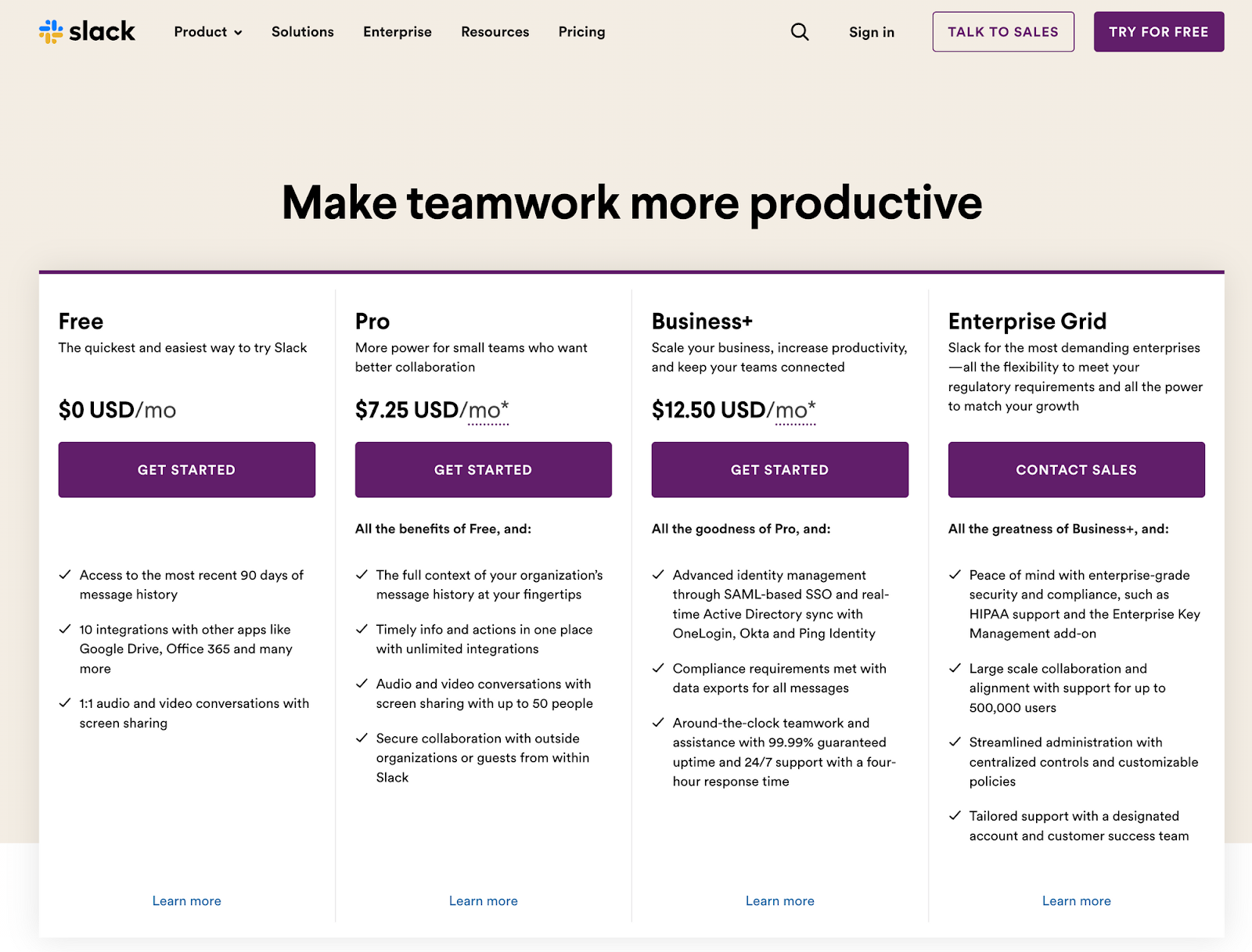Looking to build a bootstrapped SaaS company? You've come to the right place. Today, we're going to set you up for success as you embark on this journey.
SaaS startups are companies that offer software as a service, allowing customers to access features and services over the internet. These businesses typically provide subscription-based services with a range of advantages, such as scalability, flexibility, and faster deployment times.
You'll find SaaS startups in almost every industry. They usually focus on creating innovative solutions to business problems and providing an easy-to-use platform for customers. Many of the world's most successful businesses are based on the SaaS model, but you don't have to have such lofty aspirations to launch a SaaS startup — Whop makes it easy for anyone to sell SaaS products.
We'll talk more about the role Whop plays in helping you bring your SaaS startup to life later on. First, we'll talk about the benefits of bootstrapping as opposed to raising funds, and we'll also educate you on the various business models you can employ for your startup. Then, we'll wrap up by offering you a few tips to increase your likelihood of success along this journey. We've got a lot to cover, so let's start with some basic information on bootstrapping SaaS companies
What is a Bootstrapped SaaS Business?
One of the main reasons SaaS startups are so popular is that they provide an opportunity for entrepreneurs to enter into new markets quickly with minimal capital investment. This means that SaaS startups are one of the best kinds of startups for entrepreneurs who are planning to bootstrap their companies.
Bootstrapping a startup means funding it out of your own pocket and running it with limited initial resources. Many startup founders seek funding from venture capitalists or angel investors, but bootstrapped startups don't accept any equity funding at all. Instead, bootstrapping involves financing your startup using existing resources such as personal savings, investments from family and friends, and good old-fashioned ingenuity.

Of course, ingenuity doesn't actually pay any bills — but the point is that bootstrapping requires entrepreneurs to be creative in their approach to launching a business. It often demands they rely on bartering services or finding crafty ways to reduce overhead costs.
Bootstrapping also encourages entrepreneurs to focus on customer acquisition, revenue generation, and actually running the business itself rather than raising capital. Additionally, bootstrapped startups are typically leaner than those that receive venture capital funding, allowing them to remain agile and responsive in quickly-changing markets. These benefits and more make bootstrapping an excellent strategy for many kinds of SaaS startups.
How Long to Get Traction for Bootstrapped SaaS Companies
You may be wondering just how long it will take you to see your SaaS company to gain traction early on. And unfortunately, there is no one size fits all answer to how long to get traction for bootstrapped SaaS companies. It is entirely dependent on these factors:
- Market size: The size of the target market can impact the time it takes to gain traction. Smaller markets may be easier to penetrate, while larger markets may require more time and effort to build a customer base.
- Competition: The level of competition in the market can also impact the time it takes to gain traction. If there are many established competitors, it may take longer to differentiate the product and attract customers.
- Product-Market Fit: The product must address a real need in the market and solve a problem for customers. If the product doesn't resonate with customers, it may take longer to gain traction.
- Marketing strategy: The effectiveness of the marketing strategy can significantly impact the time it takes to gain traction. Effective marketing campaigns can help to build brand awareness, attract new customers, and accelerate growth.
- Sales cycle: The length of the sales cycle can impact the time it takes to gain traction. If the sales cycle is long, it may take longer to convert leads into paying customers, which can slow down growth.
In general, it's important to be patient and persistent when building a bootstrapped SaaS startup. It takes time and effort to build a customer base, gain traction, and achieve profitability, but with the right strategy, product, and team, it's possible to succeed over the long term.
Generally, it can take several months to a few years to gain traction and reach profitability. That may sound like a long time - but ask yourself this. How long are you willing to put your head down and work if it means creating the company of your dreams? Plus, with the advice we have to share later on, you can cut into that window and see traction fast. Before we get to that, here is a comparison of the pros and cons to this approach.
Should I Build a Bootstrapped SaaS Company or Raise Capital? Benefits and Drawbacks to Consider
Before we get into some of the various business models you can rely on when bootstrapping a SaaS company, we want to help you gain a better understanding of whether or not this is the right choice for you. So - what are the benefits of bootstrapping SaaS companies? Let's take a look.
Benefits of Bootstrapping Your SaaS Startup
There are a lot of benefits to bootstrapping your SaaS startup. Here are three of the most substantial advantages:
- You retain full control of your business. Securing funding from investors obviously has its benefits — but as you’re probably aware, investors won’t hand you money for free. They’ll usually expect a percentage of equity, which is essentially a small slice of ownership of your company. Each investor you win over dilutes the total control of your startup a little bit more.
- You can channel all your time and effort into developing your business instead of pitching to investors. Again, extra money from investors is nice, but to get it, you’ll need to devote a considerable amount of time to earning their investment. The process of finding investors, preparing pitch materials, and attending meetings can be very time consuming — and you’ll most likely need to do it quite a few times before you find a willing financial backer.
- Bootstrapping typically produces a leaner, more sustainable business model. When you don’t have the safety net of investor funding, you’re forced to think harder about survival. This makes for a challenging start, but your hard work and frugal business management will pay off down the line as it develops into a stable company that provides steady revenue for years to come. If you have investors to answer to who are looking for a big payoff, there’s much more pressure to take risks and achieve exponential growth rather than focus on building a sustainable business.
Drawbacks of Bootstrapping Your SaaS Startup
Now knowing the benefits of bootstrapping your SaaS startup, it's clear to see why entrepreneurs take this approach. But what's the downside? Here's what you need to know...
- Slower Growth: Bootstrapping a SaaS startup can be a slower process than raising external funds. With limited resources, it may take longer to develop and market the product, build a customer base, and grow revenue.
- Limited Resources: Without external funding, bootstrapped startups have limited resources to invest in key areas such as hiring, marketing, and product development. This can make it challenging to scale the business, especially in a competitive market. This can mean missing out on potential opportunities that require a significant upfront investment, such as expanding into new markets or developing new products.
- Increased Risk: Bootstrapping a SaaS startup means taking on more risk as the entrepreneur has a greater personal financial stake in the business. If the business fails, it can have significant personal and financial consequences.
- Lack of Expertise: Without external funding, it may be more challenging to attract and retain top talent, which can limit access to key skills and expertise necessary for growth.
- Burnout: The pressure to bootstrap a startup can take a toll on the founder's mental and physical health. Without external support, the founder may have to take on multiple roles and work long hours, leading to burnout and decreased productivity.
With that said, bootstrapping your SaaS may be your only option. And if that's the case, then you're going to want to read below as we help you uncover the best business model for your bootstrapped SaaS startup.
What’s the Best Business Model for Bootstrapped SaaS Startups?
The best structure for most entrepreneurs bootstrapping SaaS startups is either a per-user model, a tiered model, or a usage-based model. To some degree, the best business model to build your startup around depends on the exact kind of software service you will be providing. For example, if you’re providing software that includes a lot of extra add-on features by necessity, a tiered pricing model probably makes the most sense.
However, it’s also essential to consider how the SaaS business model you choose will affect your startup’s early revenue generation. As a bootstrapped startup, you won’t have the luxury of using other people’s money to tinker with your product — you need profitability up front. With that in mind, let’s evaluate the pros and cons of some of the most common SaaS business models for bootstrapped startups.
1. Per-user Model
A per-user SaaS business model is a pricing structure that charges customers a variable price that’s based on the number of individuals who will be using the software. This model is common for collaborative software tools such as project management platforms and customer relationship management (CRM) systems. It's also frequently used in industries where the number of individual users might vary significantly from client to client, such as education platforms or many other kinds of B2B enterprise software.
Many SaaS companies deploy a version of per-user pricing. Trello is a great example of a Freemium (more on that below) and per-user pricing.

A per-user structure can be beneficial for your bootstrapped SaaS startup because it allows you to scale your business quickly by charging more for larger clients with greater numbers of users. This means you can grow your revenue very quickly by attracting just a few high-ticket clients rather than grinding away, earning client after client who provides minimal ROI.
Additionally, a per-user model enables startups to offer different pricing levels depending on how many users the client expects to have, which can help create a wider appeal and draw in more customers. This added flexibility means you can focus on large enterprise customers and still maintain less expensive offers that will continue to attract smaller clients as well.
2. Usage-based Model
A usage-based SaaS business model is a pricing structure that charges customers based on how much they use the software. Usage can be measured in terms of data storage, frequency of usage, or other metrics that are relevant to the particular product. This model is commonly used by cloud storage platforms like Google Cloud or infrastructure platforms like Amazon Web Services. A usage-based model allows clients to scale their commitment according to their needs and helps them avoid overpaying for features they don't want.

For a bootstrapped SaaS startup, a usage-based model can be a good idea if it fits with your product offering and customer base. A usage-based structure provides an opportunity for startups to attract early adopters more easily by eliminating the large upfront costs associated with traditional pricing models. Additionally, usage-based pricing allows you to adjust prices as needed depending on fluctuations in customer demand or changes in the market.
However, there is also some risk involved for fully bootstrapped startups since you may not know how much revenue you'll generate per user until after customers begin using the product. This can make it challenging to plan for expenses early on.
3. Tiered (Per-feature) Model
The tiered model is a SaaS pricing structure that offers different levels of service and/or different types of features at different price points. This allows customers a great deal of flexibility to choose the feature package and level of service that best matches their needs and budget.
Many kinds of SaaS businesses favor the tiered model, including cloud storage providers, project management tools, customer relationship management systems, and e-commerce platforms. These kinds of businesses benefit from offering multiple service packages that can meet a wide variety of needs for different kinds of customers. In fact, tiered models are one of the most popular choices for nearly all kinds of SaaS startups.
Below is an example of a Tiered and Per-User-based pricing model that Notion deploys. There are different levels of features you can get but you also are paying per user. Hybrid models are growing in popularity.

A tiered model is one of the best options for a bootstrapped SaaS startup because it allows you to offer a range of services without overcommitting to upfront costs. Offering multiple, specific tiers of pricing ensures you're maximizing your revenue from each and every customer (which is absolutely essential when you're bootstrapping).
If you sell your service at just a single price point, you could be scaring off customers who would be perfectly willing to pay a bit less for fewer features while undercharging customers who may be willing to pay more for additional features if you only offered them.
A tiered pricing structure enables bootstrapped SaaS startups to attract customers who may not be able to afford more expensive options but still want access to certain features or services. At the same time, it leaves room for you to upsell to customers who can afford it.
4. Flat Pricing Model
A flat pricing model, or flat rate model, charges customers a fixed price for access to all the services and features your business offers. Flat rate models are actually somewhat rare, as most startups prefer more flexible pricing structures. However, there are still some SaaS businesses that use flat pricing models.
A flat pricing structure is attractive to many customers since they know exactly what they're committing to upfront. Customers also generally like the guarantee that they're getting access to your full services, and there's no chance they'll hit a paywall at some point. Flat rate pricing is typically one of the easiest models to sell for reasons like these. In one regard, a simpler sales process can certainly be an asset for a SaaS startup with limited resources.
Basecamp is a great example of this. They have one "Pro" plan that provides all of their features and unlimited users for one flat rate of $299 per month. They've recently added a per user tier as well, which is another example of SaaS company providing multiple pricing options or some kind of a hybrid model.

While the single, flat price may provide some budgeting advantages for customers and may be relatively easy for you to sell, it also severely restricts your ability to grow customers’ value. If there's no higher tier to push or additional features to recommend, you have few options when it comes to increasing your revenue stream other than perpetually signing on more and more customers.
Flat pricing also allows much less room for negotiation during the sales process since your flat price will force the customer into a "take it or leave it" mindset. For bootstrapped startups, it can be more advantageous to have some flexibility in your pricing model, so you have the best shot at winning each sale regardless of the customer's budget. Additionally, flat pricing does little to incentivize growth or help develop customer loyalty — once customers sign up for your service, there's not much more you can gain from the relationship.
5. Freemium Model
The freemium SaaS business model is based on the idea of providing a basic version of a service for free while offering premium features at an additional cost. This allows users to try out the product before committing to a paid subscription.
One of the main advantages of the freemium model is that it incentives a large, fast-growing customer base due to the complete lack of an upfront cost for the customer. This makes it relatively easy to attract new users, many of whom will then decide they want to start paying for additional features. Even users who decide not to upgrade to a premium subscription still usually provide valuable word-of-mouth marketing. These advantages make the freemium model one of the most popular SaaS business models, used by countless hugely successful SaaS businesses like Dropbox, Slack, Spotify, and more.

Depending on the size of your budget this can be your best choice. However, many of the advantages turn into disadvantages when you're bootstrapping your startup. Since you can't count on a steady revenue stream from users straight away, you're left with limited options for early funding.
It can be very difficult to provide an acceptable level of service to your free users if you don't have some other means of supporting the business financially until you start to rack up more paid users. If you're bootstrapping, it's typically more realistic to choose a pricing model that will provide revenue upfront to offset the costs of running your business out-of-pocket.
Tips for Anyone Building a Bootstrapped SaaS Startup
Bootstrapping your SaaS startup is not an easy road, but it’s certainly achievable with the right mindset and the proper business model. We’ll leave you with a list of tips to help you hit the ground running with your self-funded business:
- Start by selling services first before you build a product. One of the advantages of SaaS startups is that there are plenty of ways to offer your services (or services related to your product idea) online before you spend the money to build a digital platform. This will allow you to establish a customer base with a very low overhead cost, and you can use the revenue you generate at this stage to fund your product later.
- Seek help from others. Just because you’re forgoing approaching investors with your idea doesn’t mean you need to build your startup alone. Find co-founders or mentors with whom you can share knowledge and resources.
- Keep another job for now. Building a startup is exciting, and going all-in right away is understandably tempting. It might even seem like the best way to succeed since it will allow you to devote 100% of your time to your startup. However, since you’re bootstrapping, you’ll need to maintain a separate source of income until your startup is at a sustainable place, or else you’ll most likely find yourself running low on resources very quickly. It’s probably best to keep your day job for now.
- Be flexible. Bootstrapping is challenging, and everything may not go exactly according to plan. When the going gets tough, be ready to make adjustments and pivot your business model if needed.
- Utilize available tools for growth. Whop is an internet marketplace with hundreds of thousands of clients and customers. We love helping startups create more awareness and drive new growth. Check out what we can do for you at Whop.com/sell/.
Final Thoughts on Building a Bootstrapped SaaS Company
At this point, it's time to wrap up our conversation on bootstrapping a SaaS company. We've highlighted the benefits and drawbacks of this approach, and provided you with a plethora of tips to help you make your dream business a reality. We have other articles to set you up for success along this journey as well. Learn about the best SaaS revenue model for your unique offering, along with SaaS subscription management techniques.
Hopefully, you feel confident and inspired after reading this article on bootstrapping SaaS companies. The only thing left to do now is get to work - and if you want to supercharge your rate of success early on, get your SaaS listed on Whop. You'll be able to get those early customers with ease!
Read next:





